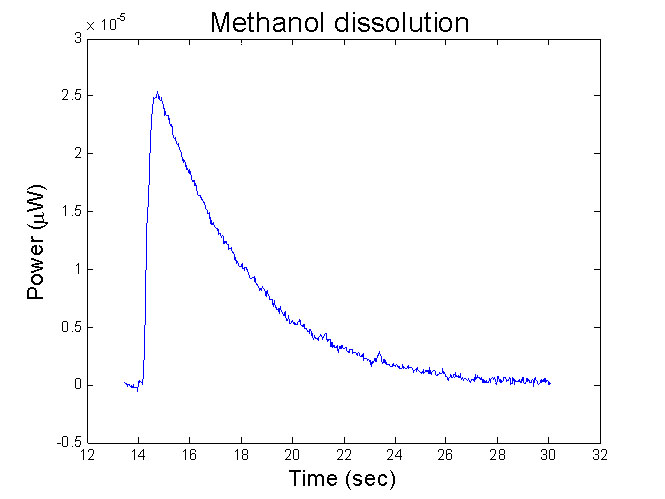|
Single Cell Calorimetry
Nakul Reddy, Wonhee Lee (Roukes Group)
Previous measurements on heat produced by microscopic biological samples suggest that
cells produce around 30 pW of power per cell; however, these measurements were performed
on bulk samples, with per cell values extracted from estimated cell counts. It is important,
therefore, to precisely measure the caloric output of single cells, as this eliminates
any confounding factors introduced by cooperativity among densely growing cells, and allows
for measurements on the distribution of heats for single cells.
Using the expertise in performing nano-scale measurements developed by the Roukes
group, Nakul Reddy together with Wonhee Lee attempted to measure the amount of heat
generated by single bacterium (E. coli) and single yeast cells (S. cerevesiae)
during metabolism. Previously, a microfluidic calorimeter was developed by Wonhee Lee
in the Roukes group. They first verified its operation by measuring the heat produced
in known exothermic reactions before attempting to load cells.
Below is an image of the device, and two demonstrations of its operation. In the first
figure is the dissolution of methanol, and second is the metabolism of urea by urease.
In the former example, the integrated energy was 11.49 μJ (in a 700 pL quantity)
whereas the reported value (based on bulk measurement) was 10 μJ. In the latter case,
the measured urea hydrolysis was 3.2 μJ for a 50mM urea sample in 3.5 nL, whereas the
bulk measured value was 2.7 μJ.



Preliminary conclusions.
This last figure below was the measurement attained from injection of bacteria
into the microfluidic chamber. The green line and blue line show two trials of bacterial
injection. One unexpected result was the huge lag time (30-50 sec) between injection
and stabilization of reading values.

|

